Harvard Business Review Case Study: The North Pole, Inc. (Part 2 of 2)
Rudolph The Red-Nosed Reindeer Feeds a Marketing Empire
The North Pole, Inc. had enormous success in their rebrand from St. Nicholas to Santa Claus. Coca-Cola aside, royalties were flowing from partnership deals with shopping centers who wanted to increase holiday traffic by encouraging children to come visit Santa and tell him what they wanted. Macy's department store in New York City latched onto the concept early on—incorporating the Santa Claus likeness into their annual Thanksgiving Day Parade and providing the setting for a feature length film called Miracle on 34th Street about a senile man that believed he was Santa.
"We thought the project would shine a light on mental health along with generating a lot of excitement around the new brand. We were right about one of those."
-Cauliflower, CMO, The North Pole, Inc.
Through Cauliflower's efforts, Santa became ubiquitous. And lucrative. Interested parties were lining up to use the Santa image in their seasonal marketing. However, The North Pole, Inc. did permit The Salvation Army to use the likeness of Santa without royalties for their annual kettle drives.
"It's Christmas after all."
-Cauliflower, CMO, The North Pole, Inc.
In 1823, Cauliflower hired a poet named Clement Clark Moore to write a document encapsulating the essence of the new Santa Claus. It was an idea inspired by Nicholas's work on the Nicene Creed. He had seen first hand how a comprehensive text could effectively unite the public's perception of some supernatural being, otherwise the character's essence is left up to individual interpretation. But to make it more fun, Cauliflower decided the Santa creed should rhyme. And have pictures. The poem was a great success.
Cauliflower's team steadily grew and decided it needed to expand the Santa mythology— sparking a century long effort to craft an entire north pole universe in the public eye. Market focus groups were conducted extensively, yielding many important insights. Regional biases were uncovered in various global markets, leading to a slew of subtle modifications to the Santa iconography. Father Christmas, Papa Noel, and Kris Kringle monikers were coined. In some instances the Santa Claus image was reworked entirely, such as the case of the Yule Lads in Iceland. In the Germanic countries an antagonist tested well, so Cauliflower introduced Krampus and Belsnickel. But eventually the focus groups kept coming back to the same conclusion: "Santa needs some friends."
"None of the focus groups responded to Mrs. Claus, so we decided not to spend much time on creating her image beyond the cursory, but the reindeer and the toymakers both seemed promising."
-Cauliflower, CMO, The North Pole, Inc.
Cauliflower created two marketing teams to focus on the reindeer and the toymakers respectively. The reindeer team was led by the former zoologist Chestnut, and the toymakers was led by Crumpit's nephew—a bright up and comer that had been born at the north pole named Steven, but Nicholas called Capybara. Chestnut's team had trouble coming up with a marketing plan for eight identical beasts of burden, they needed a star to focus on. A reindeer had just been born that had an odd nose pigmentation that Chestnut had been attempting to bottle-feed with little success. The reindeer herd had rejected the calf, forcing Chestnut to raise it into maturity. Nicholas found the calf unsettling and had even suggested euthanizing the infant since it was clear that the other reindeer wanted nothing to do with it, but Chestnut was adamant that the calf be spared. Chestnut named it Rudolph, and since Nicholas didn't want to get too attached to the reindeer, he never came up with a nickname. Inspired by Rudolph, Chestnut suggested that his team create the reindeer's marketing plan centered around the most physically distinct animal in the herd.
"The legend of Rudolph is all made up, which is why looking back the whole thing is so superficial. As someone that lives with genetic dwarfism, I regret how we singled out a single physical characteristic and focused exclusively on it. We felt the nose had to have some sort of utility in order to be accepted, which hasn't really aged well. The whole 'Rudolph got made fun of a lot’ bit, that part was true. We thought that if we made the nose glow, it would serve a purpose, but it just reinforced stereotypes that someone's worth is dependent solely on how useful they are. Even Santa comes across as an ass and reinforces this superficiality through the Rudolph storyline. I wish we had gone a different direction, but the concept tested incredibly well in focus groups."
- Cauliflower, CMO, The North Pole, Inc.
Despite what the marketing plan suggested, not all the reindeer loved Rudolph's new-found fame. Rather, they resented him for it. Lacking the nutrients that could only be provided from reindeer milk, the bottle feeding proved unsuccessful. Rudolph didn’t survive to adulthood. Despite the TV shows and song lyrics suggesting otherwise, Rudolph was never physically fit enough to accompany Nicholas on a sleigh ride and certainly would have never been permitted by the rest of the reindeer herd to lead them. But Rudolph's likeness became the second most valuable intellectual property owned by The North Pole, Inc. other than Santa Claus himself.
"The public loved him, which is ironic since everyone in the north pole hated him. I suppose maybe there's some cosmic justice in that in a way, but I don't know. Sometimes marketing plans just don't feel right even if they're successful. That's kind of how I feel about the whole Rudolph initiative."
- Cauliflower, CMO, The North Pole, Inc.
•••
From Toymakers to ‘Elves’
Capybara's toymaker team came up with a marketing plan in parallel with the reindeer team, but since the Rudolph concept tested better, their plan was rolled out more gradually. ‘Toymaker’ didn't resonate with focus groups, and the odd deformities of The North Pole, Inc.’s employees were hard to explain in a manner that children understood. So Capybara looked for a clean storyline that wouldn't rely on pity to get the public to respond.
"The Lord of the Rings was really big at the time and it kind of clouded our thinking. We came up with the concept of assigning a mythical creature to represent the toymakers— and the elves were the most noble in the Tolkien books. We were frankly a group of outcasts that had been shamed by society, so it was our attempt at rewriting that script and instilling a little pride amongst our employees. But that's not really how it worked out once the elf narrative left the north pole. The toymakers gradually resembled dwarves or hobbits, which was the complete opposite of what we were going for."
-Cauliflower, CMO, The North Pole, Inc.
With the efforts paid toward crafting the Rudolph narrative, there wasn't much budget left to do a proper roll-out of the elf image. After Cauliflower hired songwriter Johnny Marks to come up with a Rudolph jingle and Gene Autry to sing it, the marketing budget was tapped. The idea of ‘elves’ was introduced, but in a muted manner compared to the gargantuan efforts paid toward both Santa and Rudolph. As a result, the general public crafted the archetype of the ‘elf’ largely on its own. Eventually The North Pole, Inc. had to embrace the idea of small, childlike cherubs rather than the regal, warriors they had intended—or risk losing a potential revenue stream in licensing to the public domain.
"We had Tolkien all lined up to do an entire north pole mythology surrounding the elves. He had a bunch of 'Father Christmas' letters worked up as prototypes, but we couldn't afford both him and Gene Autry. And frankly, Tolkien was much more amiable. We always intended on revisiting the elf brand and kept Tolkien on retainer, but after the public image of what an elf was took hold, there was just little we could do other than roll with it. But we resisted for a long time, I mean, it was personal to us. This was who we were."
-Cauliflower, CMO, The North Pole, Inc.

The setback on the elf image was hard on the marketing team, but they decided to pivot and play the cards they had been dealt. Eventually Cauliflower greenlit an elf-themed film project by New Line Cinema starring Will Ferrell and Capybara pushed out a concept called 'Elf on the Shelf' in order to tidy up the whole naughty/nice list plot holes in the overarching north pole mythology.
"There's no such thing as a naughty and nice list, there never has been. Everyone always gets presents. I'm not even sure how that rumor got started, but I think it was by parents to encourage good behavior. I don't blame them, but it took us a while to spin that concept in a way we could monetize it. We were also upset with the failed elf launch, but Capybara's team found an innovative solution to solve both problems with the 'Elf on the Shelf' idea. It wasn’t the elf image we wanted, but nevertheless, it was a success. It just took a little longer than we were used to and had more stumbles along the way."
-Cauliflower, CMO, The North Pole, Inc.
•••
Licensing and Trademark Protection
With so many properties and trademarks providing the primary source of revenue to fund The North Pole, Inc.'s toy manufacturing and delivery services, protecting those brands required a vast team of lawyers and legal experts. Crumpit tasked a crotchety ‘elf’ known as Cratchety to be The North Pole, Inc.'s General Counsel. Like most of the elves that had relocated from Turkey, Cratchety had a life before he came to the north pole. Cratchety had previously been employed as an attorney but was disbarred and disgraced for drunken misconduct in the courtroom. But he was a whiz on copyright enforcement, aggressively protecting The North Pole, Inc.'s growing stable of properties. Cratchety sent out cease and desist letters to corporations using unsanctioned Santa likenesses in their advertisements, and an idea for the Tim Alan movie ‘The Santa Clause’ was conceived based off a legal review by Cratchety of punitive measures for theft of Santa’s belongings. Cratchety’s expertise became invaluable to Nicholas and Cauliflower, though not every issue was resolved to his satisfaction.
"That whole 'Grinch' thing really pissed me off. I mean it's a cut and dry case. This Seuss character flat out says, 'with this hat and this coat I'll look just like Saint Nick.' What more evidence do you need that they were infringing upon one of our assets? It's trademark violation, plain and simple. But since the Grinch was green and he was mean, we had a hard time getting a judge to see the case our way."
-Cratchety, General Counsel, The North Pole, Inc.
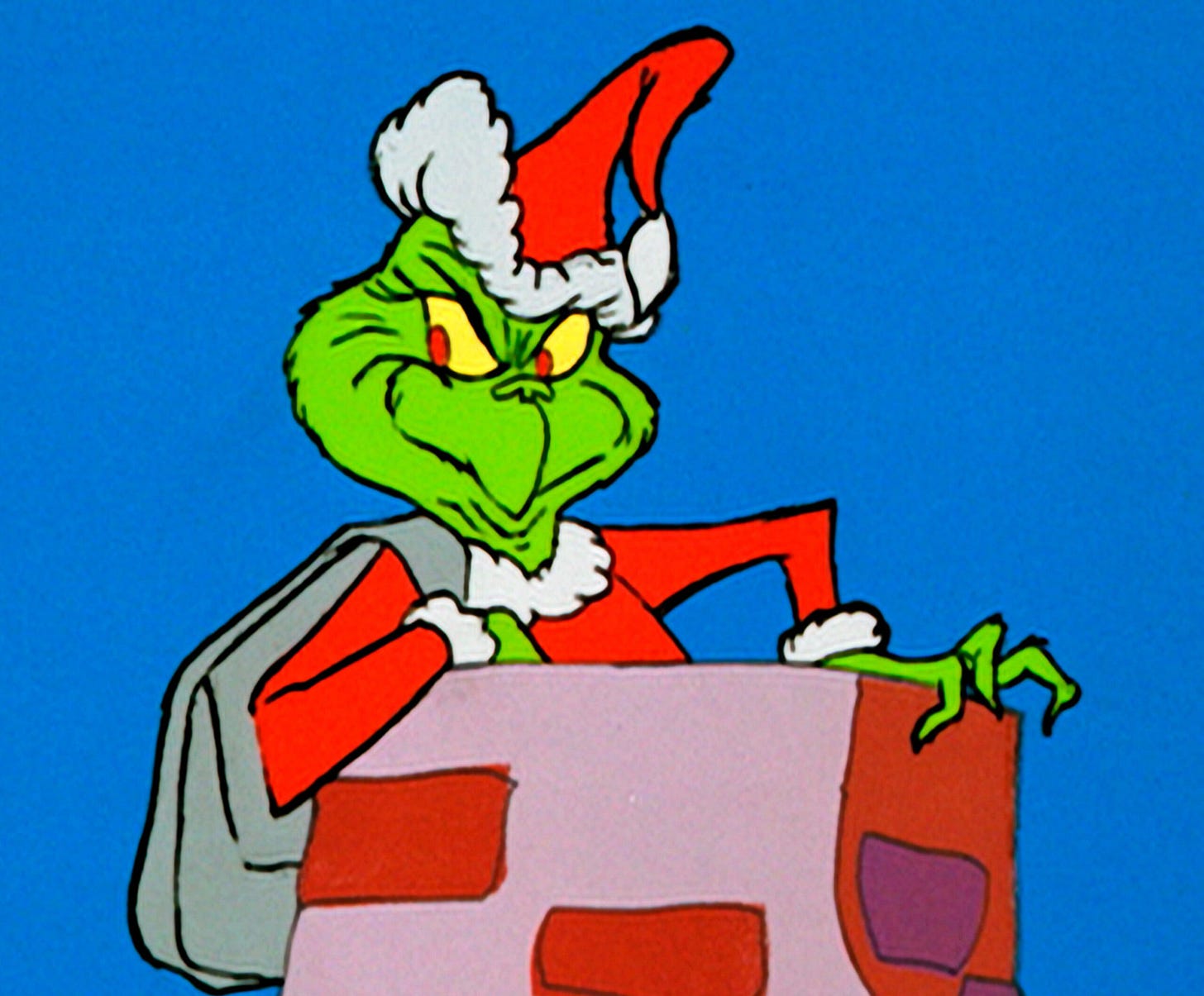
The North Pole, Inc. and Theodore Seuss Geisel eventually settled outside of court for an undisclosed sum. Cratchety advised on a growing list of other concerns beyond copyright issues. There had long been allegations of Nicholas performing illegal surveillance of children and unlawful breaking and entering. When the elves unionized in response to The North Pole, Inc. placing a growing emphasis on supply chain management and third party distribution rather than direct toy manufacturing, Cratchety became involved in negotiating The North Pole, Inc.’s first collective bargaining agreement.
"The employees really hated it when we announced we would no longer be making our own toys and instead relying on outsourcing to China— and the partnership agreement with Walmart to allow for parents to purchase toys directly and bypass delivery by Santa drove the wedge even further. But a company has to adapt. You don't survive nearly 2000 years in operation without making some tough choices."
-Nicholas, CEO, The North Pole, Inc.
•••
Succession Planning
Nicholas was growing tired, but his plans for retirement took an unexpected turn when Crumpit surprisingly died of pneumonia.
"I always knew Crumpit would be the next Santa, we were just waiting for the right time. Frankly we knew the two of us worked better as a team, but I didn't want to be CEO forever and Crumpit deserved to be allowed to move out of my shadow. But his death shocked everyone. I suppose the average lifespan for a person with the medical conditions Crumpit had is about 60 years and he made it to age 1,721— but still none of us saw it coming. It was an awful time."
-Nicholas, CEO, The North Pole, Inc.
With Crumpit deceased, Nicholas doubled down on his own efforts and shelved any talks of retirement. He promoted Capybara to COO to replace his uncle, and the youngster brought a new view to The North Pole, Inc. Under Capybara's leadership, The North Pole, Inc. started to invest heavily in artificial intelligence and analytics, allowing Nicholas to compensate for his aging workforce. The complete supply chain was reworked using Lean Six Sigma, and testing began on using autonomous electric vehicles in place of magic reindeer.
With Capybara in place, Nicholas once again started putting an eye toward retirement. But he had his doubts that an analytical and antisocial figure like Capybara could ever embody the jovial cherub that the entire Santa brand had become. But did that still matter? Did the homely image of Santa mean as much as it used to to the financial success of The North Pole, Inc. in this digital age?
Cauliflower was another potential successor, and someone that fully understand the importance of the Santa branding— but he lacked some of the financial and operations acumen necessary to keep a business financially solvent that gave all of its products away for free.
Or was it time to consider an outside hire? Nicholas had toyed with the idea of forming a board of directors and even performing an initial public offering to shore up some of their cashflow troubles. But would an outsider keep the magic alive, especially since investment bankers don’t believe in magic?
•••
Discussion Questions
1. How did The North Pole, Inc. become successful?
2. How did The North Pole, Inc. differentiate and insulate itself from competitors?
3. Is The North Pole, Inc. financially volatile? Describe the threats that they face from the various market conditions and their financial exposure.
4. If you were Nicholas, what would you do regarding succession planning?
5. What would be the pros and cons of taking The North Pole, Inc. public?




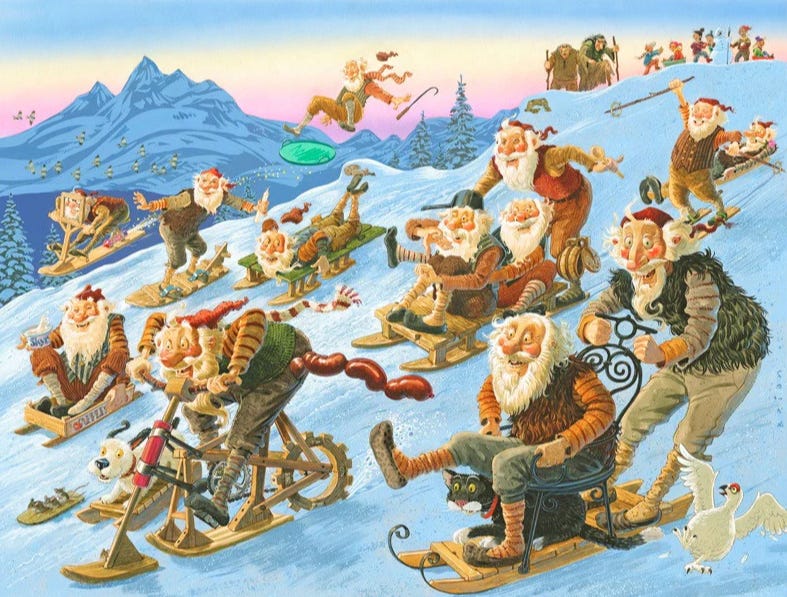

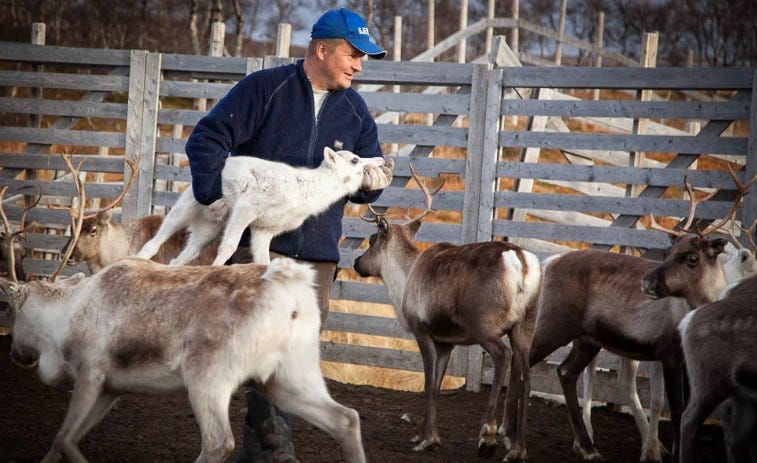
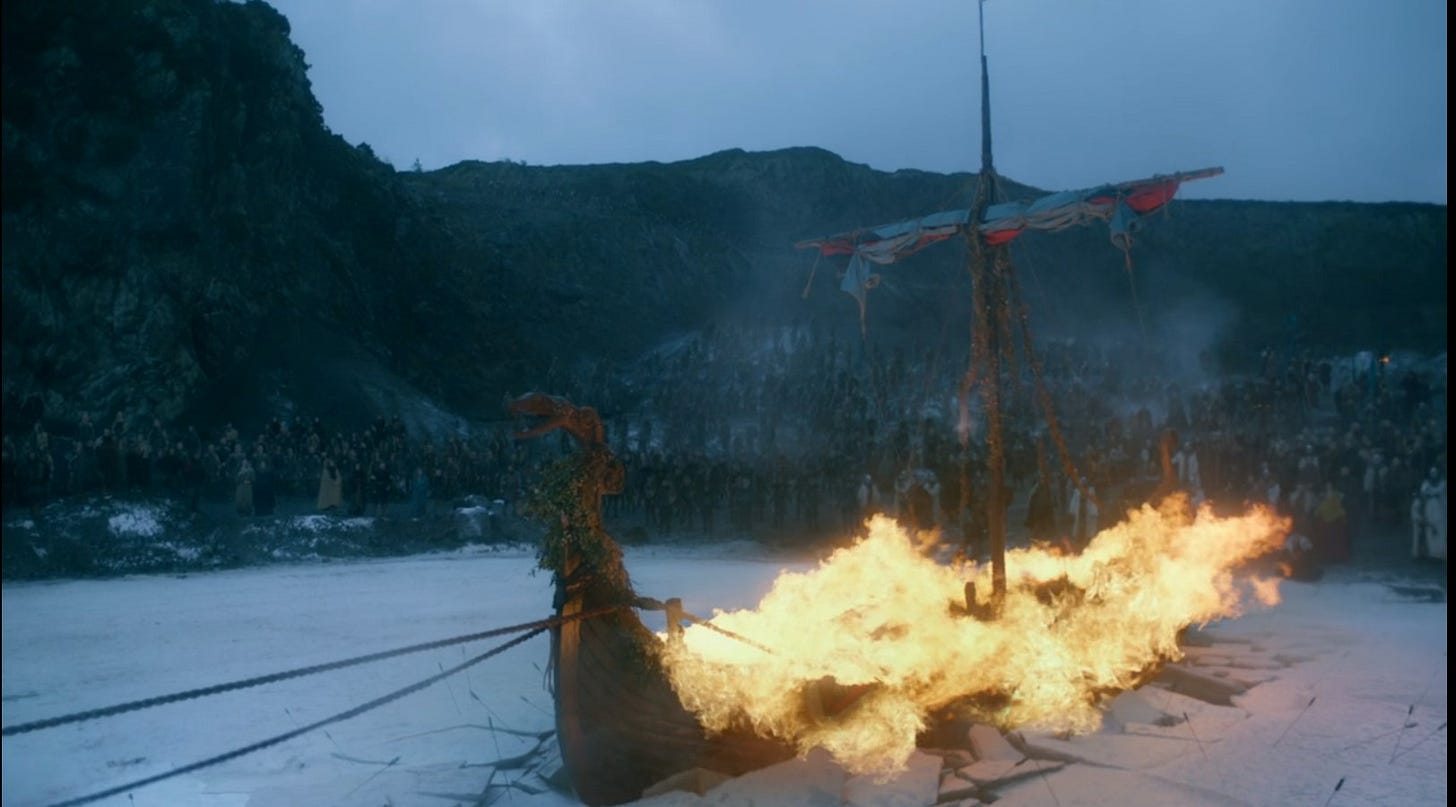
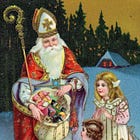

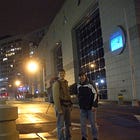
Been following Santa since his early days. Great leader. Great company.